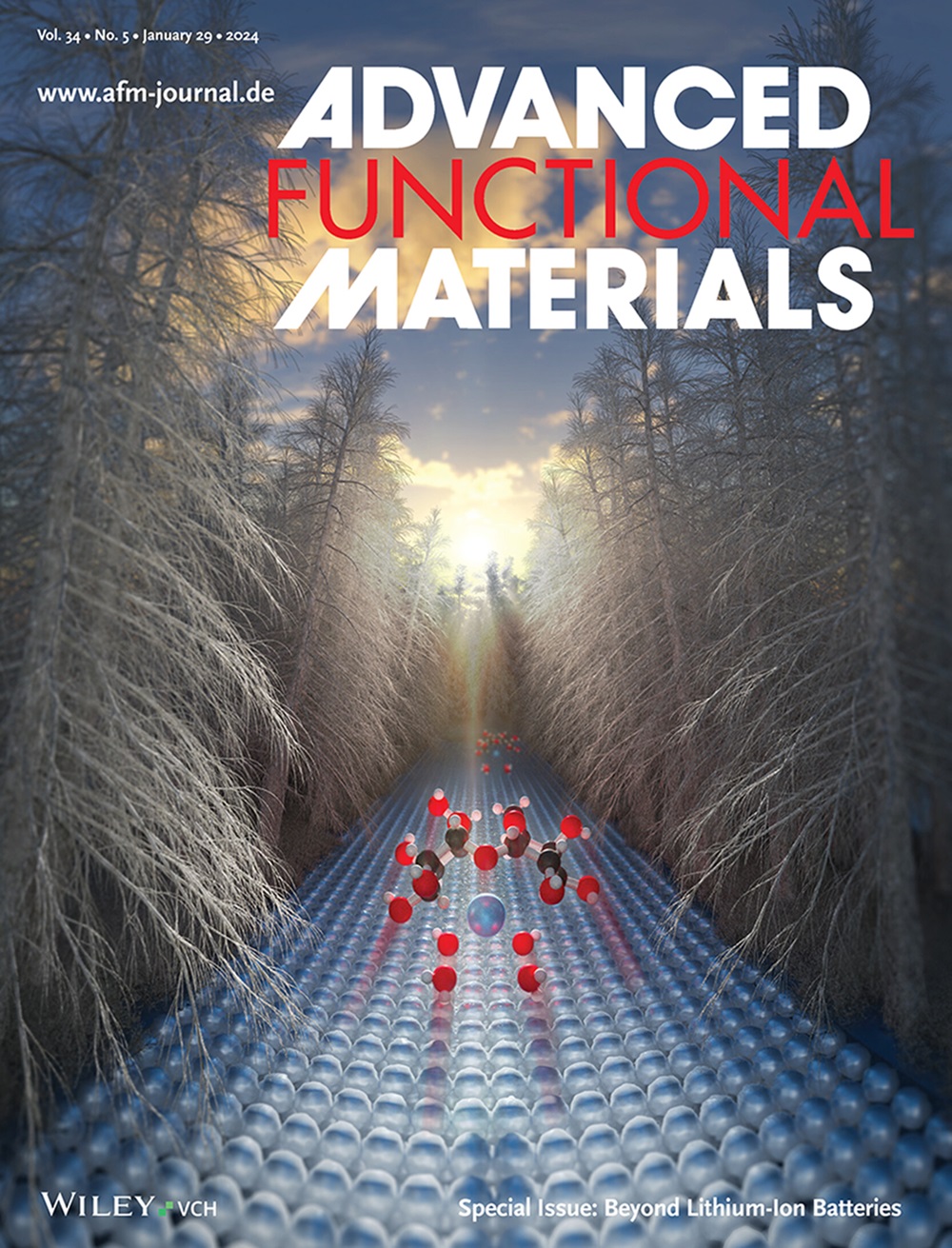用于多通道神经信号记录的聚合物集成机械柔性碳纳米管微电极阵列
IF 19
1区 材料科学
Q1 CHEMISTRY, MULTIDISCIPLINARY
引用次数: 0
摘要
植入式微电极阵列对于神经信号采集至关重要,促进了基础神经科学和临床神经修复学的发展。然而,传统的金属基电极与脑组织存在严重的机械不匹配,经常导致插入诱导的微损伤和慢性炎症。虽然聚合物基替代品提供了更好的机械顺应性,但其固有的低导电性限制了性能。本文提出了一种由垂直排列的碳纳米管(CNT)森林组成的软微电极阵列,该阵列独特地结合了高电导率(在1 kHz时≈41.24 kΩ)和机械柔软度(≈54 MPa)。为了在不影响电导率的情况下提高机械稳健性,采用了毛细管力诱导的致密化过程,随后采用了一种新型的气压辅助柔性化技术。通过将弹性体基质渗透到碳纳米管柱中,聚合物结合,垂直排列的碳纳米管微电极阵列优化了植入。通过琼脂糖凝胶和小鼠大脑的机械表征和插入测试,证实了该装置具有增强的机械顺应性和稳定的插入行为。组织学分析显示,与传统的钨丝微丝相比,炎症反应减少。此外,体内电生理记录证明了视觉诱发神经信号的可靠获取。这些结果突出了基于碳纳米管的软微电极阵列的潜力,以克服现有神经接口的机械和电气限制,实现更稳定,生物相容性和高保真度的神经记录。本文章由计算机程序翻译,如有差异,请以英文原文为准。
Polymer‐Incorporated Mechanically Compliant Carbon Nanotube Microelectrode Arrays for Multichannel Neural Signal Recording
Implantable microelectrode arrays are essential for neural signal acquisition, facilitating advances in both fundamental neuroscience and clinical neuroprosthetics. However, conventional metal‐based electrodes exhibit severe mechanical mismatch with soft brain tissue, often resulting in insertion‐induced micro‐damage and chronic inflammation. While polymer‐based alternatives offer improved mechanical compliance, their inherently low electrical conductivity limits performance. Here, a soft microelectrode array composed of vertically‐aligned carbon nanotube (CNT) forests that uniquely combine high electrical conductivity (≈41.24 kΩ at 1 kHz) and mechanical softness (≈54 MPa) is presented. To enhance mechanical robustness without compromising electrical conductivity, a capillary‐force‐induced densification process, followed by a novel air‐pressure‐assisted flexibilization technique, is used. By infiltrating an elastomer matrix into the CNT pillars, polymer‐incorporated, vertically aligned CNT microelectrode arrays optimized for implantation are developed. The resulting devices exhibit enhanced mechanical compliance and stable insertion behavior, as confirmed by mechanical characterization and insertion tests into agarose gels and mouse brains. Histological analysis reveals reduced inflammatory responses compared to conventional tungsten microwires. Furthermore, in vivo electrophysiological recordings demonstrate reliable acquisition of visually evoked neural signals. These results highlight the potential of CNT‐based soft microelectrode arrays to overcome the mechanical and electrical limitations of existing neural interfaces, enabling more stable, biocompatible, and high‐fidelity neural recordings.
求助全文
通过发布文献求助,成功后即可免费获取论文全文。
去求助
来源期刊

Advanced Functional Materials
工程技术-材料科学:综合
CiteScore
29.50
自引率
4.20%
发文量
2086
审稿时长
2.1 months
期刊介绍:
Firmly established as a top-tier materials science journal, Advanced Functional Materials reports breakthrough research in all aspects of materials science, including nanotechnology, chemistry, physics, and biology every week.
Advanced Functional Materials is known for its rapid and fair peer review, quality content, and high impact, making it the first choice of the international materials science community.
 求助内容:
求助内容: 应助结果提醒方式:
应助结果提醒方式:


